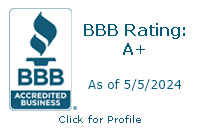Carbon Buildup in VW TSI Engines — Why Walnut Blasting Restores Lost Power

Why Walnut Blasting Restores Lost Power
If you own a Volkswagen GTI, Golf R, or any vehicle powered by a TSI engine, you’ve probably heard about carbon buildup, the hidden performance killer that robs your car of power, fuel efficiency, and smooth throttle response.
At RevTech Performance in Sterling, VA, we specialize in diagnosing and fixing carbon buildup issues with professional walnut blasting, a cleaning process that safely restores your engine’s airflow and power without damage.
Here’s why it happens, how it affects your car, and why cleaning it the right way makes a world of difference.
Why VW TSI Engines Develop Carbon Buildup
Volkswagen’s TSI (Turbocharged Stratified Injection) engines use direct fuel injection, a design that improves fuel economy and power by spraying fuel directly into the combustion chamber instead of the intake manifold.
The downside?
Because fuel no longer washes over the intake valves,
oil vapors and soot from the crankcase ventilation (PCV) system start to stick and harden on the intake valves over time.
The result:
- Restricted airflow into the cylinders
- Poor combustion efficiency
- Rough idle or hesitation
- Loss of horsepower
Even with high-quality oil and fuel, carbon buildup is inevitable on these engines, typically appearing around 40,000–60,000 miles.
Common Symptoms of Carbon Buildup in VW TSI Engines
If your VW has been tuned, driven aggressively, or hasn’t had an intake cleaning service in a few years, you may notice:
1. Loss of Power or Throttle Response
Your TSI engine may feel sluggish, especially in the midrange where it used to pull hardest.
2. Rough Idle or Misfires
Uneven combustion caused by restricted valves can trigger misfire codes (often P0300–P0304).
3. Poor Fuel Economy
As the engine struggles to breathe, it burns more fuel to compensate.
4. Check Engine Light
A clogged intake system often leads to lean or misfire codes that can’t be fixed by spark plugs or coils alone.
5. Hesitation Under Boost
Turbocharged TSI engines are particularly sensitive to airflow restrictions, carbon buildup limits boost efficiency and throttle smoothness.
Why Walnut Blasting Is the Best Solution
While there are chemical cleaners and “fuel additives” that claim to remove carbon buildup, they don’t reach the intake valves on direct-injection engines.
Walnut blasting is the industry standard for restoring airflow and engine performance.
Here’s how it works:
- The intake manifold is removed.
- Each intake valve is cleaned using
fine walnut shell media blasted under high pressure.
- The process removes carbon buildup without damaging the aluminum or valve surfaces.
- The ports are vacuumed and inspected to ensure perfect airflow.
The result?
- Restored horsepower and throttle response
- Smoother idle and acceleration
- Improved fuel economy
- Longer engine life
How Often Should You Clean Your VW’s Intake Valves?
For most VW TSI and GTI engines, we recommend walnut blasting every 50,000–60,000 miles, or sooner if the car is tuned or driven aggressively.
At RevTech Performance, we pair each cleaning with a borescope inspection and optional PCV system check to prevent early carbon reformation.
Preventing Future Carbon Buildup
While it can’t be fully avoided, you can reduce buildup by:
- Performing
regular oil changes using VW-approved oil
- Installing a
catch can system to reduce oil vapors
- Using high quality fuel and occasional Italian tune ups (spirited driving helps blow out residue)
- Scheduling preventive maintenance every 40k miles
Schedule Your VW Carbon Cleaning at RevTech Performance
If your Volkswagen GTI, Golf R, or Audi A3/S3 feels sluggish, misfires, or idles rough, it might be time for a carbon cleaning.
At RevTech Performance, we use professional-grade walnut blasting to restore lost power, clean your intake valves, and ensure your TSI engine runs like new.
Call us today or schedule your appointment online to get your VW performing at peak power again.










